Using PolicyMap to Support the Evolution of Retail Site Selection

The convergence of remote work and the growing trend of online shopping is reshaping the types of commercial entities seeking brick-and-mortar locations. Cities like Philadelphia are witnessing a unique metamorphosis, with retail stores being repurposed into entertainment venues, restaurants, and experiential destinations, marking a departure from conventional retail spaces. As a company with office space in downtown Philadelphia, we are watching this adaptation take place firsthand.
Maps and Data for Site Selection Analysis
Regardless of the evolving trends, one constant remains—the importance of market research in site selection. For businesses, whether venturing into traditional retail or experiential spaces, understanding the market is a crucial first step. Accessing the right data and utilizing advanced software for analysis becomes paramount in making informed decisions that align with consumer preferences and market demands.
Consider a retail store that sells educational products, services, or experiences for children, particularly those between the ages of 5 and 9, and wants to be within easy walking distance of that population. Where in Philadelphia, for example, might such a brick-and-mortar store consider locating?
For any brick-and-mortar site, the main question to ask is simple. Where does the local population mirror my store’s customer base? A single indicator on a map shows only a slice of the information needed, but multiple indicators overlayed together can provide the insights needed to make actionable decisions. In this case below, we identify the single best location for a new site location in Philadelphia.
Using PolicyMap, users can pull a variety of indicators about neighborhoods to find those locations that meet all of the criteria a particular store might care about.
Factor 1: Where are there large populations of children aged 5 to 9?
The map below highlights in purple the zip codes that are home to at least 2,000 children in this age bracket according to the most recent data from the American Community Survey (ACS).
Factor 2: Where is this population growing?
The map below highlights those zip codes where the population of children in this age bracket grew by at least 50% over the last 5 years according to ACS.
Factor 3: Where do families tend to make more money in the City?
The map below highlights the zip codes where the median family income is greater than $110,000 – significantly higher than the City median of $67,000 – according to ACS.
Factor 4: Where do families spend more money on education for their children?
The map below highlights in green where families spend more than $1,300 per year on education, according to Consumer Spending Habit data developed by PolicyMap.
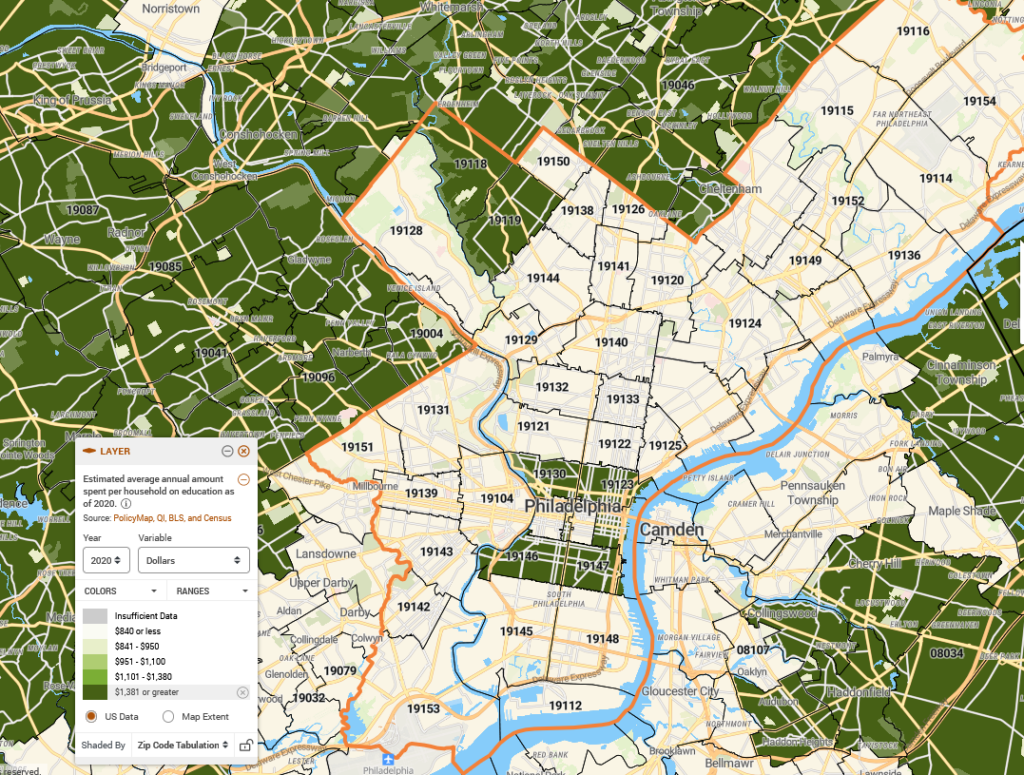
Factor 5: Where is business vacancy improving?
The map below shows those areas in green where the business vacancy rate has improved over the last year according to data from Vallassis Lists.
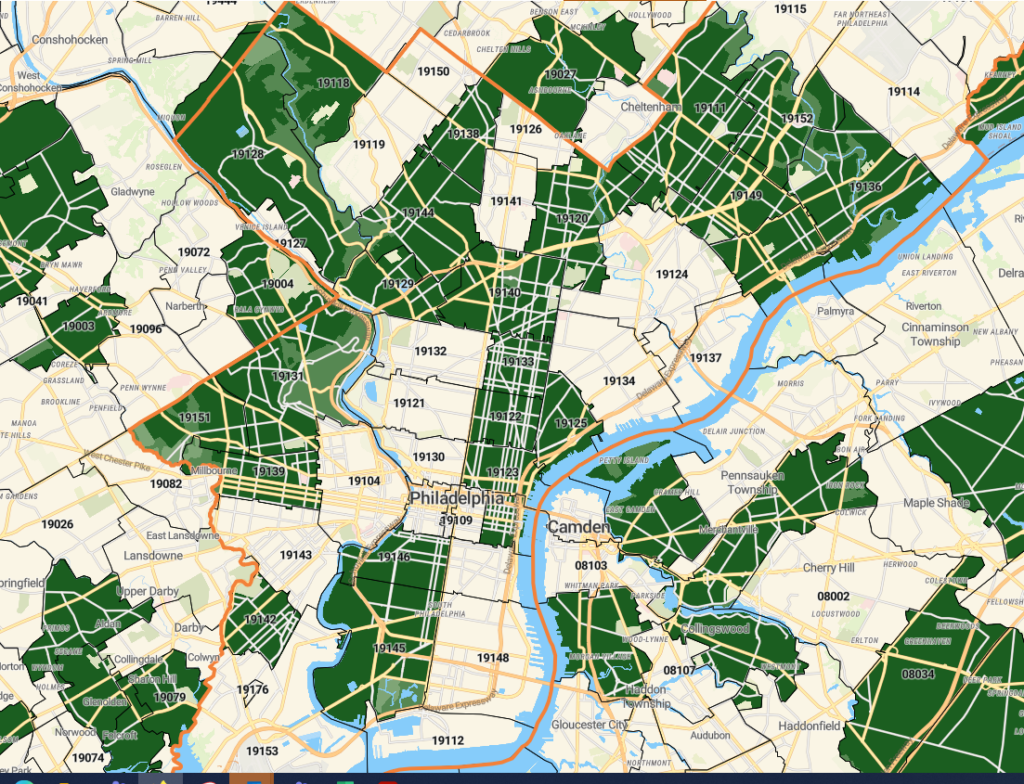
The fundamental question is: Where do all these conditions align? By utilizing PolicyMap’s multi-layer mapping tool, a user can pinpoint a specific zip code in Philadelphia that satisfies all these criteria. Zip code: 19146
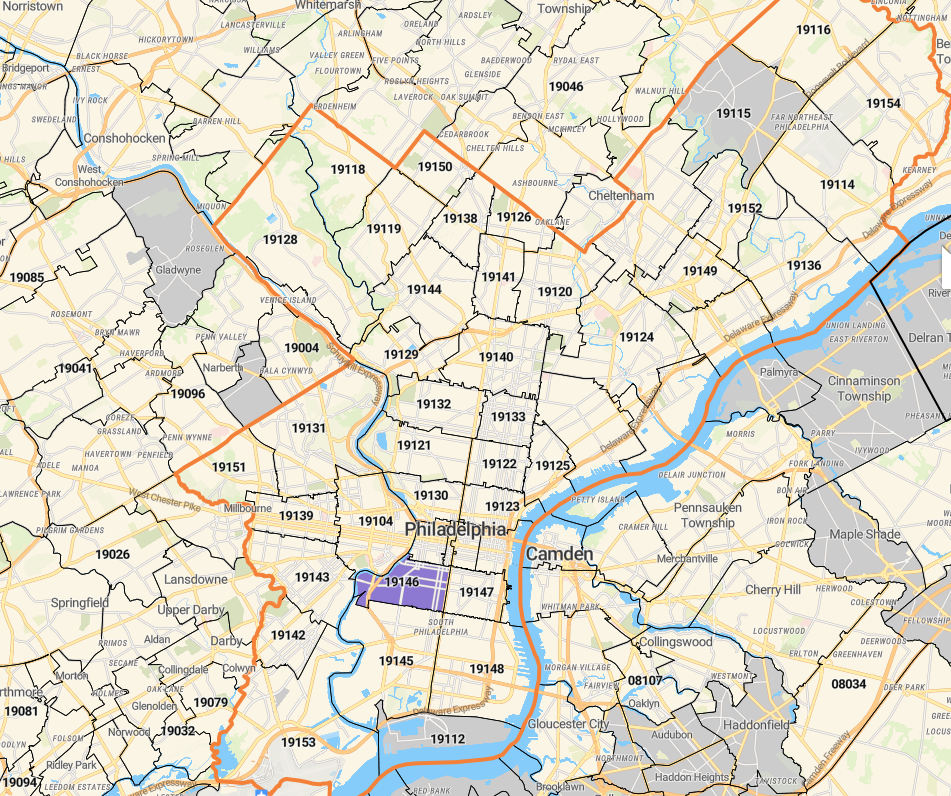
Zip code 19146 is home to 2,163 children aged 5 through 9 and this population has grown 58.69% over the last 5 years. Families have a median income of $112,059 annually and spend an average of $1,450 on education for their children. Business vacancy has declined by 3.13 between the 3rd qtr of 2023 and the 3rd qtr of 2022.
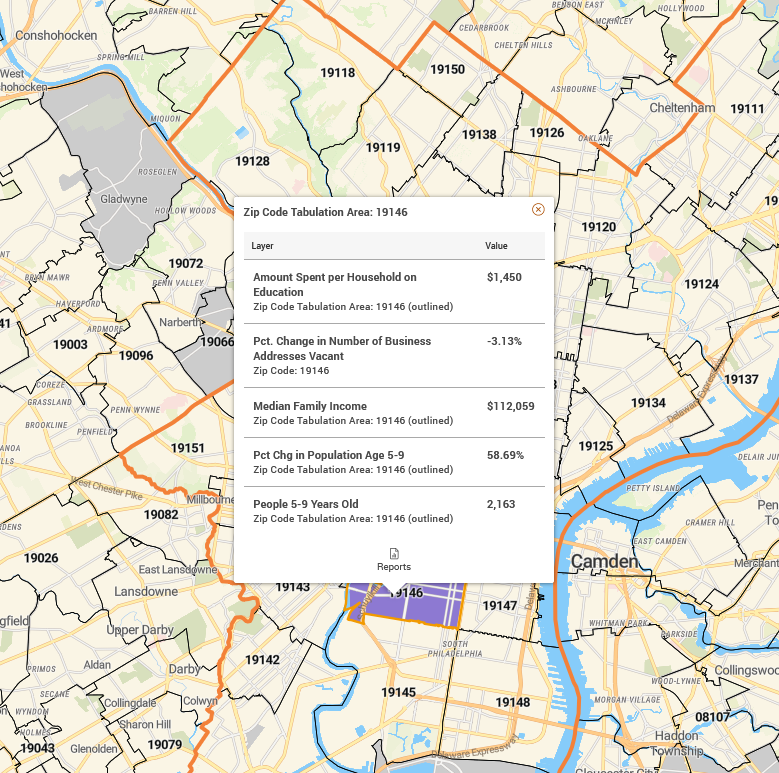
With the addition of zoning data from Philadelphia, a user can also see the commercial strips in red in this zip code.
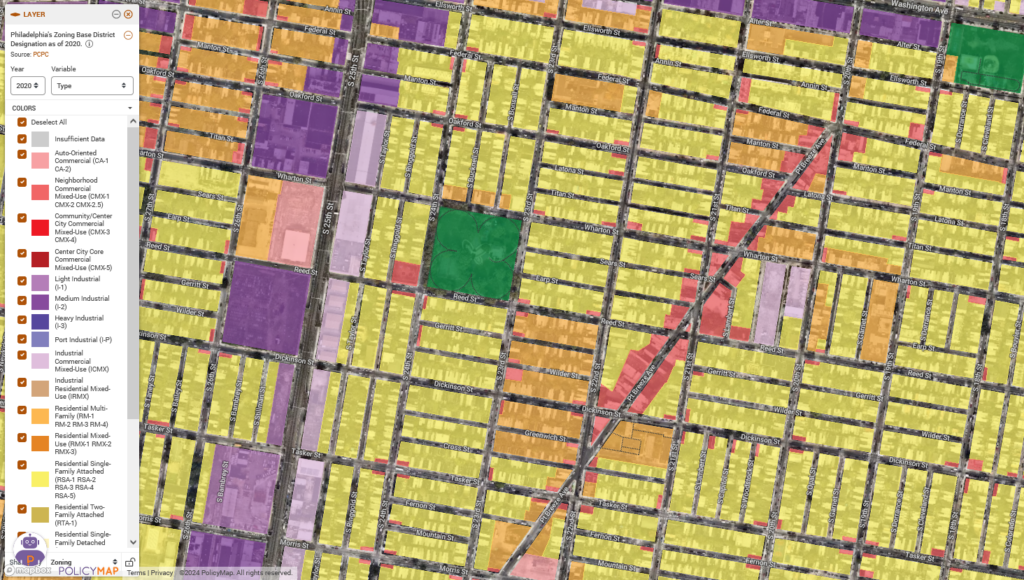
And zoom in to see the building footprints of these commercial/retail zoned areas.
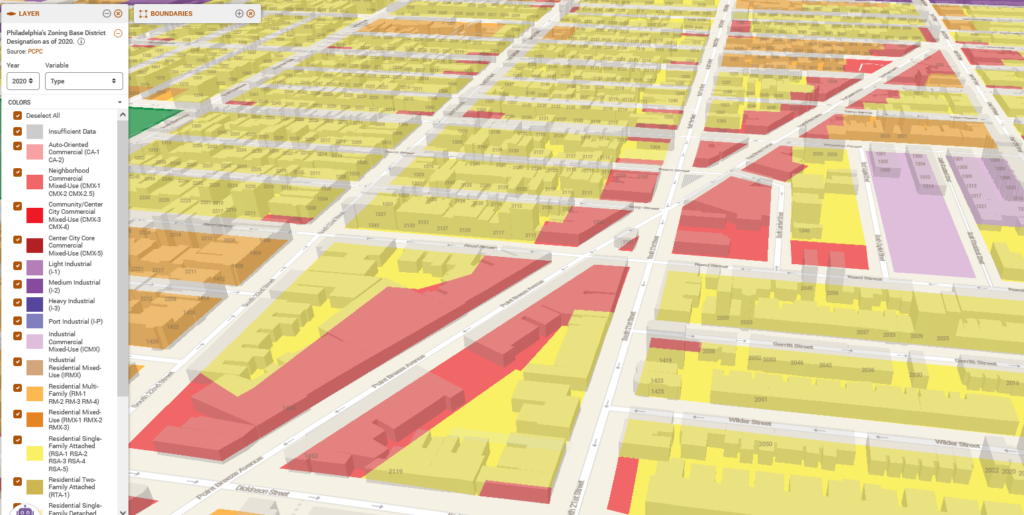
Effective site selection goes beyond market research and demands on-the-ground interviews and surveys. With the assistance of PolicyMap’s location intelligence, users can precisely target areas for a more comprehensive investigation.
Request More Information
Interested in learning more about how our data can enhance location strategy and site selection processes? Fill in the form below to learn more or schedule a demo.